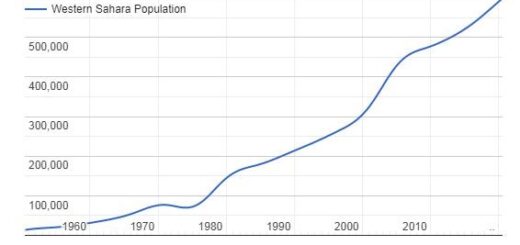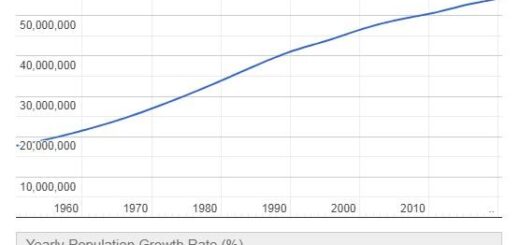Geography of Middle East
The Middle East, a region located at the crossroads of Asia, Africa, and Europe, is known for its diverse landscapes, ancient history, and cultural richness. Stretching from the eastern Mediterranean to the Arabian Peninsula and from the Persian Gulf to the Red Sea, the Middle East encompasses a variety of physical features, including deserts, mountains, fertile plains, and coastal areas. The geography of the Middle East has played a significant role in shaping its history, trade routes, and cultural interactions.
Physical Features:
- Deserts: The Middle East is home to some of the world’s most prominent deserts. The Arabian Desert, occupying much of the Arabian Peninsula, is the largest continuous desert on Earth. This arid landscape is characterized by vast sand dunes and extreme temperatures. The Rub’ al Khali, or the Empty Quarter, is a particularly challenging desert region within the Arabian Desert.
- Mountain Ranges: According to listofledlights, several mountain ranges traverse the Middle East, influencing the region’s topography and climate. The Zagros Mountains in Iran and the Taurus Mountains in Turkey are significant ranges, while the Hijaz Mountains run along the western coast of the Arabian Peninsula. These mountains have historically impacted settlement patterns, providing both natural barriers and resources.
- Fertile Plains and River Basins: The fertile plains and river basins of the Middle East have been crucial to the development of ancient civilizations. The Tigris and Euphrates rivers form the Mesopotamian region, often referred to as the “cradle of civilization.” The Nile River, which flows through Egypt in northeastern Africa, also has historical and cultural ties to the Middle East.
- Plateaus: The Anatolian Plateau in Turkey and the Iranian Plateau in Iran are significant elevated regions in the Middle East. These plateaus, with their diverse landscapes, have played roles in historical migrations, trade, and the development of various cultures.
- Coastlines and Seas: The Middle East has extensive coastlines along the Mediterranean Sea, the Red Sea, the Persian Gulf, and the Arabian Sea. The Mediterranean coastlines of countries like Lebanon and Israel are characterized by fertile plains and historical cities. The Red Sea and the Persian Gulf serve as important waterways for trade and transportation.
Climate:
The Middle East experiences a range of climates, from arid and semi-arid conditions to more Mediterranean climates along the coasts.
- Arid and Desert Climates: Large parts of the Middle East, including the Arabian Peninsula and parts of Iran, feature arid and desert climates. These regions experience high temperatures, low precipitation, and vast expanses of desert landscapes.
- Mediterranean Climate: Coastal areas along the Mediterranean, such as Lebanon and parts of Israel, have Mediterranean climates characterized by hot, dry summers and mild, wet winters. These regions support a variety of vegetation and agriculture.
- Semi-Arid Climates: Many areas in the Middle East, including parts of Iraq, Syria, and Iran, experience semi-arid climates with moderate rainfall. These regions often have steppe-like landscapes with grasses and shrubs adapted to drier conditions.
- Mountain Climates: The highland areas, such as the Zagros Mountains in Iran and the Taurus Mountains in Turkey, have cooler temperatures and varying precipitation. These mountainous regions contribute to the overall climatic diversity of the Middle East.
Biodiversity:
Despite its arid nature, the Middle East is home to diverse ecosystems and unique flora and fauna.
- Desert Adapted Wildlife: The Arabian Desert and other arid regions are home to species adapted to harsh desert conditions. This includes animals like the Arabian oryx, sand gazelle, and various reptiles and insects with specialized adaptations for survival in extreme temperatures.
- Migratory Birds: The Middle East serves as a critical stopover for migratory birds traveling between Africa and Europe. Wetlands along the coasts and river deltas provide important habitats for these birds during their annual migrations.
- Coral Reefs: The Red Sea, known for its vibrant coral reefs, is home to a diverse marine ecosystem. Coral reefs in the Middle East support a variety of fish species and contribute to the region’s ecological richness.
Cultural and Historical Significance:
The Middle East has a deep cultural and historical heritage, with its geography influencing the development of ancient civilizations, trade routes, and cultural exchanges.
- Ancient Civilizations: Mesopotamia, situated between the Tigris and Euphrates rivers, was home to ancient civilizations such as the Sumerians, Babylonians, and Assyrians. The Nile River Valley in northeastern Africa, closely linked to the Middle East, fostered the development of ancient Egyptian civilization.
- Trade Routes: The Middle East has been a crossroads for trade routes connecting Asia, Africa, and Europe. The Silk Road, passing through the region, facilitated the exchange of goods, technologies, and cultural practices. Historic trade cities like Damascus and Petra were key centers of commerce.
- Islamic Civilization: The birth of Islam in the 7th century had a profound impact on the Middle East and beyond. Mecca and Medina, located in the Arabian Peninsula, are sacred cities in Islam. The expansion of Islamic civilization influenced art, science, and governance across the region.
- Ottoman Empire: The Ottoman Empire, centered in Anatolia (modern-day Turkey), expanded its influence across the Middle East, North Africa, and parts of southeastern Europe. The empire’s legacy is evident in the diverse cultural influences and architectural marvels found in the region.
- Crusades: The geographic location of the Middle East made it a focal point for religious and military conflicts, including the Crusades between Christians and Muslims in the medieval period. The impact of these historical events is still felt in the region today.
Challenges and Opportunities:
The Middle East faces a variety of challenges and opportunities related to geopolitics, economic development, and environmental sustainability.
- Political Instability: The Middle East has experienced political instability and conflicts, including territorial disputes, civil wars, and geopolitical tensions. These challenges have profound effects on regional stability and development.
- Water Scarcity: Many parts of the Middle East face water scarcity issues due to arid climates and increasing demand for water resources. Sustainable water management practices and innovations are essential for addressing this challenge.
- Economic Diversification: Countries in the Middle East, particularly those relying heavily on oil and gas revenues, are exploring economic diversification to reduce dependence on hydrocarbons. Efforts to develop knowledge-based economies and invest in alternative industries are underway.
- Cultural Preservation: The rich cultural heritage of the Middle East faces challenges from urbanization, conflict, and environmental changes. Preservation efforts are crucial for safeguarding historical sites, artifacts, and traditional practices.
- Renewable Energy Potential: The Middle East has vast potential for renewable energy, particularly solar and wind power. Investments in renewable energy projects can not only address energy needs but also contribute to environmental sustainability.
Conclusion:
In conclusion, the geography of the Middle East is characterized by a diverse range of physical features and climates that have shaped its history, culture, and contemporary challenges. From the ancient civilizations of Mesopotamia to the cultural richness of the Islamic world, the Middle East’s geography has been a dynamic force in shaping the region’s identity. As the Middle East navigates the challenges and opportunities of the 21st century, an understanding of its geography remains essential for addressing issues related to political stability, economic development, and environmental sustainability.


